Jeep Compass vs Subaru Solterra – Which one offers the better deal?
Both models have their strengths – but which one suits you more?
Compare performance, efficiency, price and space directly: Jeep Compass or Subaru Solterra?
Costs and Efficiency: Price and efficiency are often the first things buyers look at. Here it becomes clear which model has the long-term edge – whether at the pump, the plug, or in purchase price.
Jeep Compass has a distinct advantage in terms of price – it starts at 34200 £, while the Subaru Solterra costs 42800 £. That’s a price difference of around 8648 £.
In terms of energy consumption, the advantage goes to the Subaru Solterra: with 16 kWh per 100 km, it’s barely noticeable more efficient than the Jeep Compass with 17.50 kWh. That’s a difference of about 1.50 kWh.
As for range, the Jeep Compass performs minimal better – achieving up to 500 km, about 34 km more than the Subaru Solterra.
Engine and Performance: Power, torque and acceleration are the classic benchmarks for car enthusiasts – and here, some clear differences start to show.
When it comes to engine power, the Jeep Compass has a hardly perceptible edge – offering 240 HP compared to 218 HP. That’s roughly 22 HP more horsepower.
In acceleration from 0 to 100 km/h, the Subaru Solterra is slight quicker – completing the sprint in 6.90 s, while the Jeep Compass takes 7.30 s. That’s about 0.40 s faster.
In terms of top speed, the Jeep Compass performs a bit better – reaching 200 km/h, while the Subaru Solterra tops out at 160 km/h. The difference is around 40 km/h.
There’s also a difference in torque: Jeep Compass pulls minimal stronger with 345 Nm compared to 336 Nm. That’s about 9 Nm difference.
Space and Everyday Use: Cabin size, boot volume and payload all play a role in everyday practicality. Here, comfort and flexibility make the difference.
Both vehicles offer seating for 5 people.
In curb weight, Jeep Compass is distinct lighter – 1575 kg compared to 2013 kg. The difference is around 438 kg.
In terms of boot space, the Jeep Compass offers slightly more room – 550 L compared to 452 L. That’s a difference of about 98 L.
When it comes to payload, Subaru Solterra to a small extent takes the win – 537 kg compared to 470 kg. That’s a difference of about 67 kg.
Who comes out on top?
Overall, the Jeep Compass shows itself to be outperforms in nearly all aspects and secures the title of DriveDuel Champion.
It convinces with the more balanced overall package and proves to be the more versatile choice for everyday use.
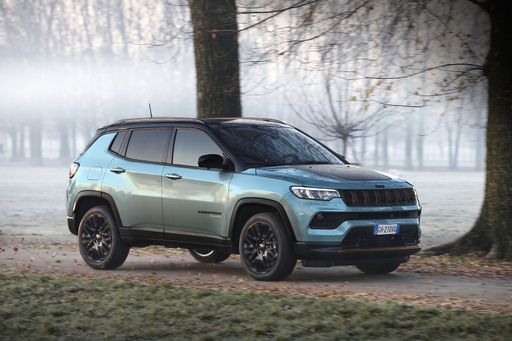
Jeep Compass
Jeep Compass
The Jeep Compass combines a rugged aesthetic with modern sophistication, making it a standout choice in the compact SUV segment. Its robust design is complemented by a comfortable interior that offers ample space and cutting-edge technology for a seamless driving experience. Whether tackling urban environments or venturing off-road, the Compass provides versatility and reliability, embodying the adventurous spirit synonymous with the Jeep brand.
details @ media.stellantis.com
@ media.stellantis.com
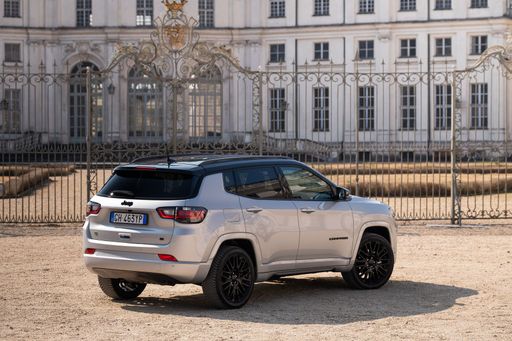 @ media.stellantis.com
@ media.stellantis.com
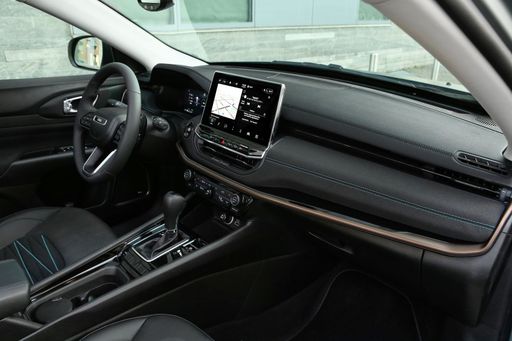 @ media.stellantis.com
@ media.stellantis.com
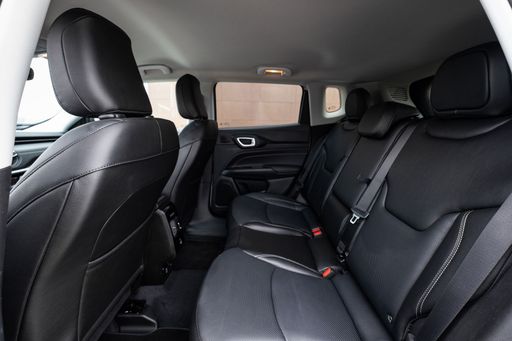 @ media.stellantis.com
@ media.stellantis.com
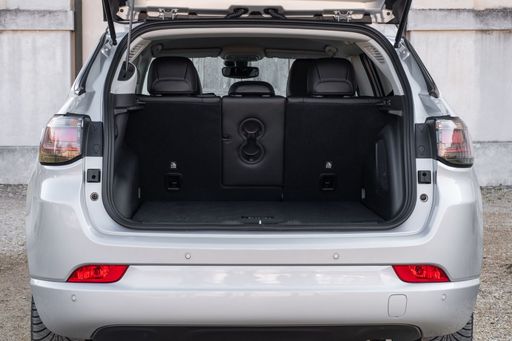 @ media.stellantis.com
@ media.stellantis.com
Subaru Solterra
The Subaru Solterra represents the brand's first venture into the all-electric vehicle market, combining Subaru's renowned all-wheel-drive capabilities with eco-friendly technology. Its sleek and modern design is complemented by a spacious interior, ensuring comfort for both driver and passengers. With a focus on sustainability and innovation, the Solterra is poised to appeal to environmentally conscious consumers seeking adventure without compromising on performance.
details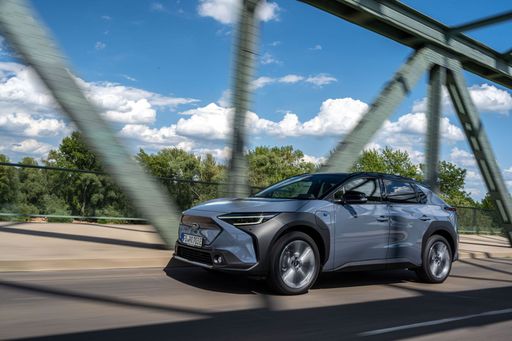 @ Subaru
@ Subaru
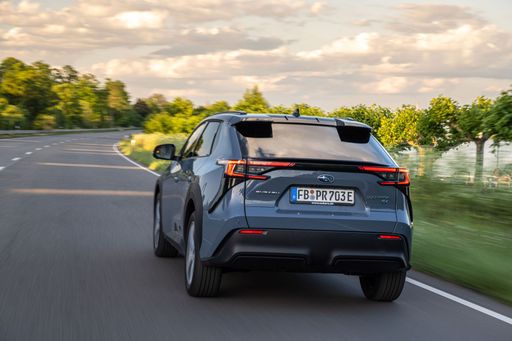 @ Subaru
@ Subaru
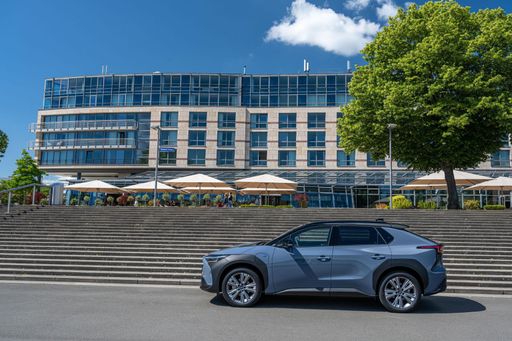 @ Subaru
@ Subaru
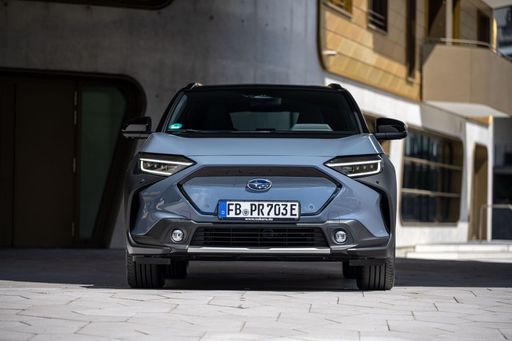 @ Subaru
@ Subaru
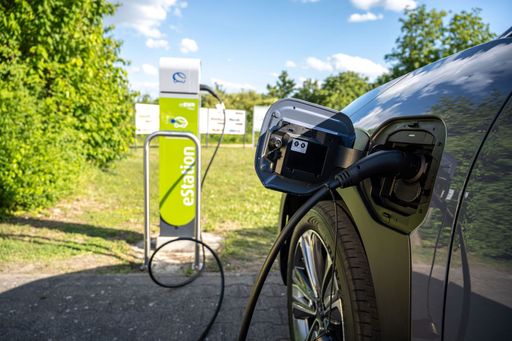 @ Subaru
@ Subaru
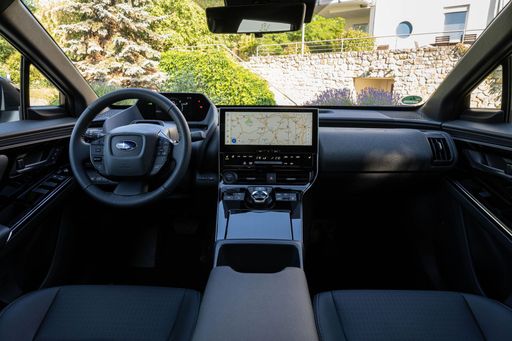 @ Subaru
@ Subaru
 @ Subaru
@ Subaru

|

|
|
|
|
Costs and Consumption |
|
|---|---|
|
Price
34200 - 46900 £
|
Price
42800 - 46200 £
|
|
Consumption L/100km
2 - 5.9 L
|
Consumption L/100km
-
|
|
Consumption kWh/100km
17.50 kWh
|
Consumption kWh/100km
16 - 17.9 kWh
|
|
Electric Range
36 - 500 km
|
Electric Range
416 - 466 km
|
|
Battery Capacity
74 kWh
|
Battery Capacity
-
|
|
co2
0 - 133 g/km
|
co2
0 g/km
|
|
Fuel tank capacity
36 - 55 L
|
Fuel tank capacity
-
|
Dimensions and Body |
|
|---|---|
|
Body Type
SUV
|
Body Type
SUV
|
|
Seats
5
|
Seats
5
|
|
Doors
5
|
Doors
5
|
|
Curb weight
1575 - 2198 kg
|
Curb weight
2013 - 2057 kg
|
|
Trunk capacity
420 - 550 L
|
Trunk capacity
441 - 452 L
|
|
Length
4404 - 4552 mm
|
Length
4690 mm
|
|
Width
1819 mm
|
Width
1860 mm
|
|
Height
1629 - 1675 mm
|
Height
1650 mm
|
|
Max trunk capacity
1230 - 1387 L
|
Max trunk capacity
-
|
|
Payload
465 - 470 kg
|
Payload
493 - 537 kg
|
Engine and Performance |
|
|---|---|
|
Engine Type
Petrol MHEV, Plugin Hybrid, Electric
|
Engine Type
Electric
|
|
Transmission
Automatic
|
Transmission
Automatic
|
|
Transmission Detail
Dual-Clutch Automatic, Automatic Gearbox, Reduction Gearbox
|
Transmission Detail
Reduction Gearbox
|
|
Drive Type
Front-Wheel Drive, All-Wheel Drive
|
Drive Type
All-Wheel Drive
|
|
Power HP
130 - 240 HP
|
Power HP
218 HP
|
|
Acceleration 0-100km/h
7.3 - 10.3 s
|
Acceleration 0-100km/h
6.90 s
|
|
Max Speed
180 - 200 km/h
|
Max Speed
160 km/h
|
|
Torque
230 - 345 Nm
|
Torque
336 Nm
|
|
Number of Cylinders
4
|
Number of Cylinders
-
|
|
Power kW
96 - 177 kW
|
Power kW
160 kW
|
|
Engine capacity
1199 - 1469 cm3
|
Engine capacity
-
|
General |
|
|---|---|
|
Model Year
2024 - 2025
|
Model Year
2022
|
|
CO2 Efficiency Class
D, B, A
|
CO2 Efficiency Class
A
|
|
Brand
Jeep
|
Brand
Subaru
|
What drivetrain options does the Jeep Compass have?
The Jeep Compass is available as Front-Wheel Drive or All-Wheel Drive.
The prices and data displayed are estimates based on German list prices and may vary by country. This information is not legally binding.
